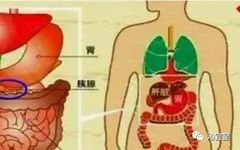A Detailed Explanation of TCM: The Interrelationships of the Five Organs and Six Bowels
The human body contains five organs (wuzang) and six bowels (liufu). The five organs are: Heart (xin), Liver (gan), Spleen (pi), Lung (fei), and Kidney (shen); the six bowels refer to the Gallbladder (dan), Stomach (wei), Large Intestine (dachang), Small Intestine (xiaochang), San Jiao (triple burner), and Bladder (pangguang).
The primary function of the five organs is to store essence and qi; the main physiological function of the six bowels is to receive, digest food, separate clear from turbid, transform essence, and expel waste from the body without retention.
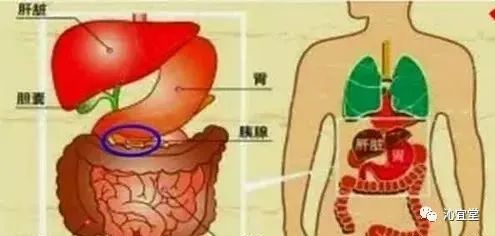
The Relationship Between the Five Organs and Health Preservation
For any issue related to tendons, treating the Liver is appropriate.
For any issue related to bones, treating the Kidney is appropriate.
For any issue related to muscles, treating the Spleen and Stomach is appropriate.
For any issue related to blood vessels, treating the Heart is appropriate.
For any skin or hair issues, treating the Lung is appropriate.

Functions of the Five Organs
1. Heart (xin): The Heart is the residence of the spirit, the master of blood, and the root of the pulse. It belongs to the Fire element;
Physiological functions: ① Governs blood vessels; ② Governs consciousness; the Heart opens to the tongue, connects with the pulse in the body, manifests on the face, corresponds to joy in emotions, and sweat in fluids. The Heart is interiorly and exteriorly related to the Small Intestine.
2. Lung (fei): The Lung is the place of the corporeal soul, the master of qi, and belongs to the Metal element;
Physiological functions: ① Governs qi and respiration; ② Governs dispersing and descending; ③ Regulates water pathways; ④ Governs the hundred vessels and regulates their flow (stagnation); assists the Heart in regulating qi and blood circulation; the Lung connects to the throat, manifests on the skin, corresponds to grief in emotions, and mucus in fluids. The Lung is interiorly and exteriorly related to the Large Intestine.
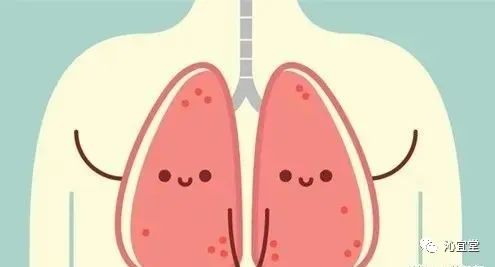
3. Spleen (pi): The Spleen is the source of qi and blood transformation, the foundation of postnatal life, and stores intention, belonging to the Earth element.
Physiological functions: ① Governs transportation and transformation; ② Governs the elevation of clear qi; ③ Governs blood regulation; opens to the mouth, connects with flesh, governs the four limbs, manifests on the lips, corresponds to thought in emotions, and saliva in fluids; the Spleen is interiorly and exteriorly related to the Stomach.
4. Liver (gan): The Liver is the place of the ethereal soul, the storehouse of blood, and the root of tendons. It belongs to the Wood element and governs upward movement.
Physiological functions: ① Governs smooth flow; ② Stores blood; opens to the eyes, connects with tendons, manifests on the nails, corresponds to anger in emotions, and tears in fluids; the Liver is interiorly and exteriorly related to the Gallbladder.
5. Kidney (shen): The Kidney is the foundation of pre-natal essence, stores will, and the waist is the organ of the Kidney, belonging to the Water element;
Physiological functions: ① Stores essence, governs growth, development, and reproduction; ② Governs water; ③ Governs the reception of qi; in the body, it corresponds to bones, governs bone marrow, manifests on hair, opens to the ears and the two yin (anus and perineum), corresponds to fear in emotions, and saliva in fluids; the Kidney is interiorly and exteriorly related to the Bladder.
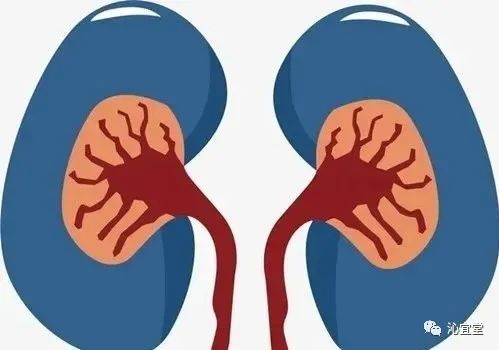

Interrelationships of the Five Organs
Interrelationships of the Five Organs: The Liver generates the Heart, the Heart generates the Spleen, the Spleen generates the Lung, the Lung generates the Kidney, and the Kidney generates the Liver.
Conflict among the Five Organs: The Liver overcomes the Spleen, the Spleen overcomes the Kidney, the Kidney overcomes the Heart, the Heart overcomes the Lung, and the Lung overcomes the Liver.

The Relationship Between the Five Organs and the Five Spirits
Five Spirits: Ethereal Soul (hun), Spirit (shen), Intention (yi), Corporeal Soul (po), Will (zhi).
The five organs store: the Liver stores the Ethereal Soul, the Heart stores the Spirit, the Spleen stores Intention, the Lung stores the Corporeal Soul, and the Kidney stores Will (from the “Su Wen: On the Five Qi”). The five organs also generate five emotions: joy corresponds to the Heart, anger to the Liver, thought to the Spleen, grief to the Lung, and fear to the Kidney. These emotions further develop into the seven emotions: joy, anger, sadness, thought, worry, fear, and shock.
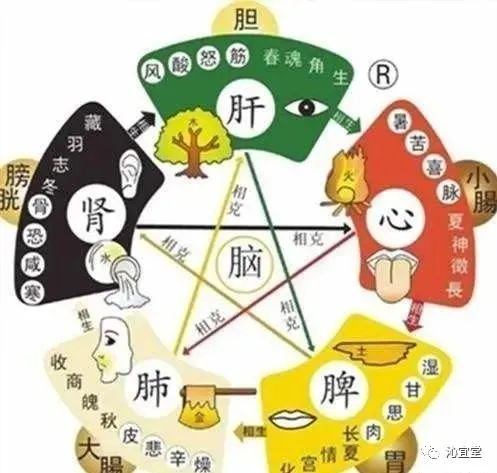

The Relationship Between the Five Organs and the Five Fluids
Five Fluids: Tears, Sweat, Saliva, Mucus, and Spit.
The “Su Wen: On the Five Qi” states, “The five organs transform into five fluids: the Heart corresponds to Sweat, the Lung to Mucus, the Liver to Tears, the Spleen to Saliva, and the Kidney to Spit, which are known as the five fluids.

The Relationship Between the Five Organs and the Five Orifices
Five Orifices: Eyes, Tongue, Mouth, Nose, and Ears.
The Liver opens to the Eyes, the Heart opens to the Tongue, the Spleen opens to the Mouth, the Lung opens to the Nose, and the Kidney opens to the Ears.

The Relationship Between the Five Organs and the Five Tastes
The Liver corresponds to Sour (affecting tendons), the Heart to Bitter (affecting blood), the Spleen to Sweet (affecting flesh), the Lung to Pungent (affecting qi), and the Kidney to Salty (affecting bones).
Excessive anger harms the Liver, excessive joy harms the Heart, excessive thought harms the Spleen, excessive worry harms the Lung, and excessive fear harms the Kidney. Anger causes qi to rise, joy causes qi to relax, sadness causes qi to dissipate, fear causes qi to descend, cold causes qi to contract, heat causes qi to disperse, shock causes qi to become chaotic, overwork causes qi to deplete, and thought causes qi to stagnate. Joy overcomes sadness, sadness overcomes anger, anger overcomes thought, thought overcomes fear, and fear overcomes joy.

Prolonged viewing harms blood (Heart), prolonged lying harms qi (Kidney), prolonged sitting harms flesh (Spleen), prolonged standing harms bones (Lung), and prolonged walking harms tendons (Liver).

The Relationship Between the Six Bowels and Health Preservation
1. Gallbladder (dan): Known as the official of central justice, it governs decision-making.
Physiological functions: Stores and excretes bile, the Gallbladder governs decision-making.
2. Stomach (wei): Known as the official of granaries, when Stomach fire is excessive, hunger occurs quickly, and upper tooth pain corresponds to the Stomach meridian, Neiting point;
Physiological functions: Receives and digests food, the Stomach descends to harmonize.
3. Small Intestine (xiaochang): The official of receiving and storing, it extracts essence;
Physiological functions: Governs receiving and transforming substances, separates clear from turbid, “the Small Intestine governs fluids.”

4. Large Intestine (dachang): The official of transmission, it expels waste, lower tooth pain corresponds to the Large Intestine meridian, Hegu point, and Jiache point.
Physiological functions: Transforms waste, the Large Intestine governs fluids.
5. Bladder (pangguang): The official of the state, it governs qi transformation.
Physiological functions: Stores and excretes urine, relying on the Kidney’s qi transformation function.
6. San Jiao (triple burner): The official of communication and drainage, it regulates water pathways and oversees the five organs and six bowels.
Physiological functions: Facilitates the flow of original qi, oversees qi mechanisms and transformations, and serves as the pathway for water and fluids.
【Disclaimer】 The content is sourced from the internet, public channels such as WeChat official accounts, compiled by the editor for reference, learning, and communication purposes only. This site does not guarantee the accuracy and completeness of this information; product information is subject to official announcements. The copyright of the article belongs to the original author; please contact us for removal in case of infringement.

